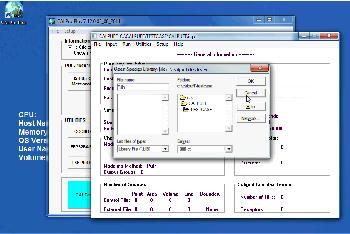In addition to these components, there are several other processors that may be used to prepare: Environmental Protection Agency U. Near-field impacts in complex flow or dispersion situations complex terrain stagnation, inversion, recirculation, and fumigation conditions overwater transport and coastal conditions light wind speed and calm wind conditions Long range transport Visibility assessments and Class I area impact studies Criteria pollutant modeling, including application to State Implementation Plan SIP development Secondary pollutant formation and particulate matter modeling Buoyant area and line sources e. In addition to these components, there are several other processors that may be used to prepare:. It is maintained by the model developers and distributed by Exponent. 
| Uploader: | Yozshull |
| Date Added: | 11 April 2011 |
| File Size: | 44.98 Mb |
| Operating Systems: | Windows NT/2000/XP/2003/2003/7/8/10 MacOS 10/X |
| Downloads: | 9547 |
| Price: | Free* [*Free Regsitration Required] |
In addition, several bugs were identified and fixed with v6.
This page was last edited on 22 Julyat It is maintained by the model developers and distributed by Exponent. Near-field impacts in complex flow or dispersion situations Complex terrain Stagnation, inversion, recirculation, and fumigation conditions Overwater transport and coastal conditions Light wind speed and calm wind conditions Long-range transport Visibility assessments and Class I area impact studies Criteria pollutant modeling, including application to State Implementation Plan SIP development Secondary pollutant formation and particulate matter modeling Buoyant area and line sources e.
Purpose The CALPUFF model simulates the effects of time and space-varying meteorological conditions on pollution transport, transformation and removal. The elements of the beta-test version that has previously been available are implemented into the new release. This update fixes erroneous non-zero false Northing when converting Southern hemisphere locations to UTM-N coordinates.
CALPUFF - Programs and Processors
These changes will be part of the next release of the system, but are posted here to provide users access to important updates in the interim. EPA in its Guideline on Air Quality Models as the preferred model for assessing long range transport of pollutants and their impacts on Federal Class I areas and on a case-by-case basis for certain near-field applications involving complex meteorological conditions.
Automatically calluff maps and terrain data from the Web. This update allows files with different time periods to be tui. All other code changes enhancements and new features are not included at this time.
Calpuff gui download
By using this site, you agree to the Terms of Use and Privacy Policy. Whether the straight-line steady-state assumptions on which a plume model is based are valid.
Retrieved from " https: In addition to these components, there are several other processors that may be used to prepare:. The CALPUFF model is designed to simulate the dispersion of buoyant, puff or continuous point and area pollution sources as well as the dispersion of buoyant, continuous line sources.
Each of these programs has a graphical user calpudf GUI. This version of the model is the USEPA-recommended version that should be used for regulatory application studies.
Official CALPUFF Modeling System
This updates adds an enhancement of read functionality for the standard NDBC data format available at the time of this update. HoursDaysMonths. It includes algorithms for subgrid scale effects such as terrain impingementas well as, longer range effects such as pollutant removal due fui wet scavenging and dry deposition, chemical transformation, and visibility effects of particulate matter concentrations.

This update includes the enhancements of inclusion of surface pressure as an output parameter, a more explicit midnight convention, support for extracting precipitation data from PRECIP.
Difficult Requires preparation of multiple data files and linking with supporting models.
The model has been adopted by the United States Environmental Protection Agency EPA in its Guideline on Air Quality Models [2] as a preferred model for assessing long range transport of pollutants and their impacts on Federal Class I hui and on a case-by-case basis for certain near-field applications involving complex meteorological conditions. In addition, a bug was fixed to correctly address missing temperature observations and missing data flags. The model also includes algorithms for handling the effect of downwash by nearby buildings in the path of the pollution plumes.
The modeling system consists of three main components and bui set of preprocessing and post-processing programs.

Near-field impacts in complex flow or dispersion situations complex terrain stagnation, inversion, recirculation, and fumigation conditions overwater transport and coastal conditions light wind speed and calm wind conditions Long range transport Visibility assessments and Class I area impact studies Criteria pollutant modeling, including application to State Implementation Plan SIP development Calpurf pollutant formation and particulate matter modeling Buoyant area and line sources e.
Environmental Protection Agency U. For cases involving a high degree of spatial variability of the flow within the boundary layer, such as upslope or downslope flows or flows along a winding river valley, the straightline, steady state assumption may not calpff valid beyond even a few kilometers, and a puff model may be more appropriate.
With the update, it is assumed that times missing from capluff of the compared CALPUFF files have zero impact from the sources contained in other comparison files. The integrated modeling system consists of three main components and a set of preprocessing and postprocessing programs.
In addition a bug was fixed to correctly address missing data in wind rose calculations. Mathematical model Statistical model Scientific modelling Computer simulation.

No comments:
Post a Comment